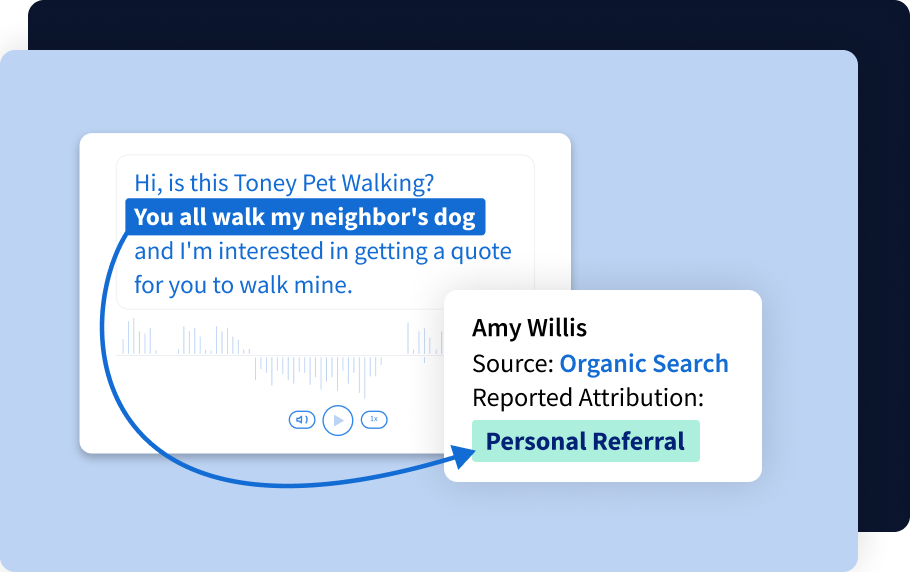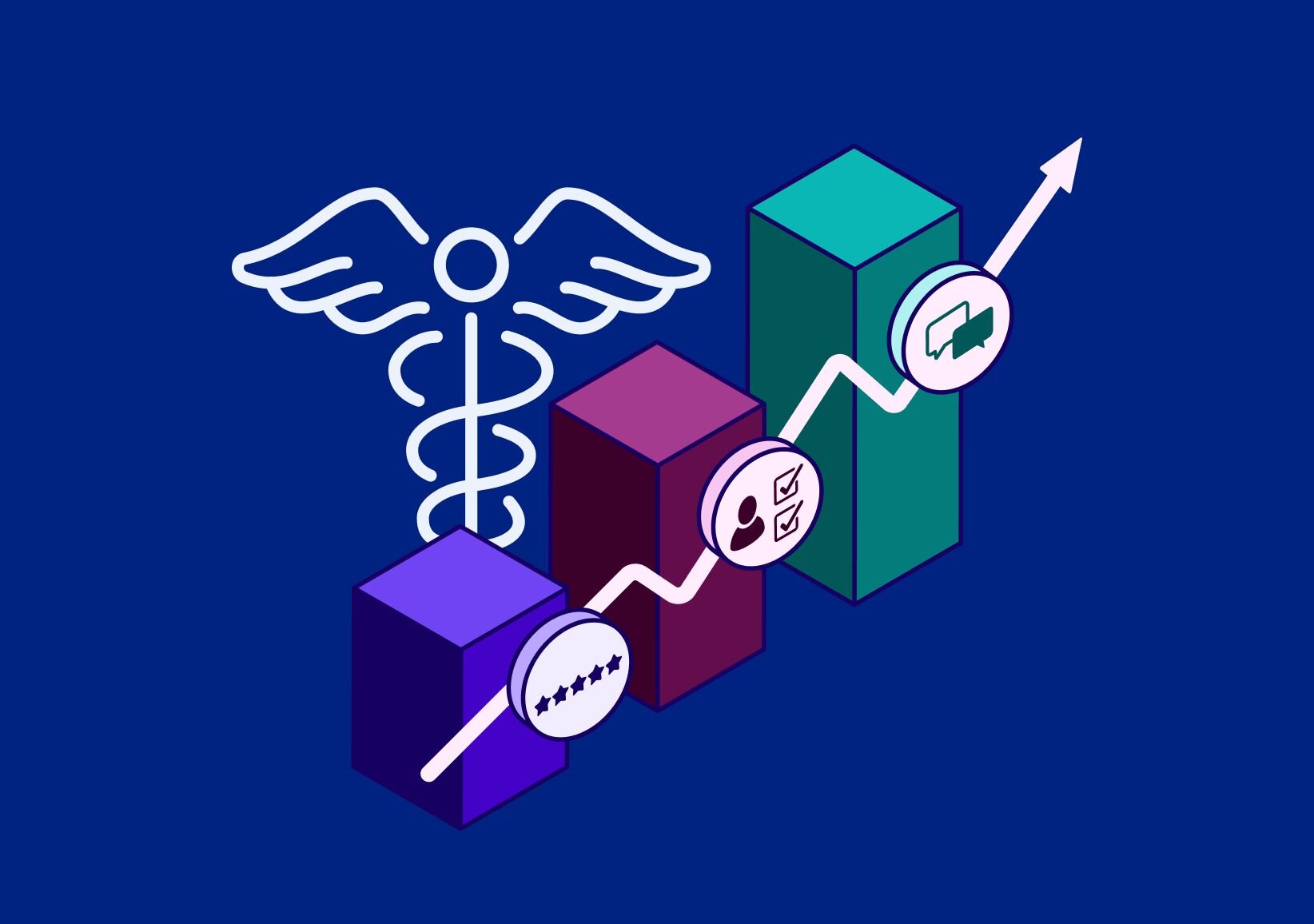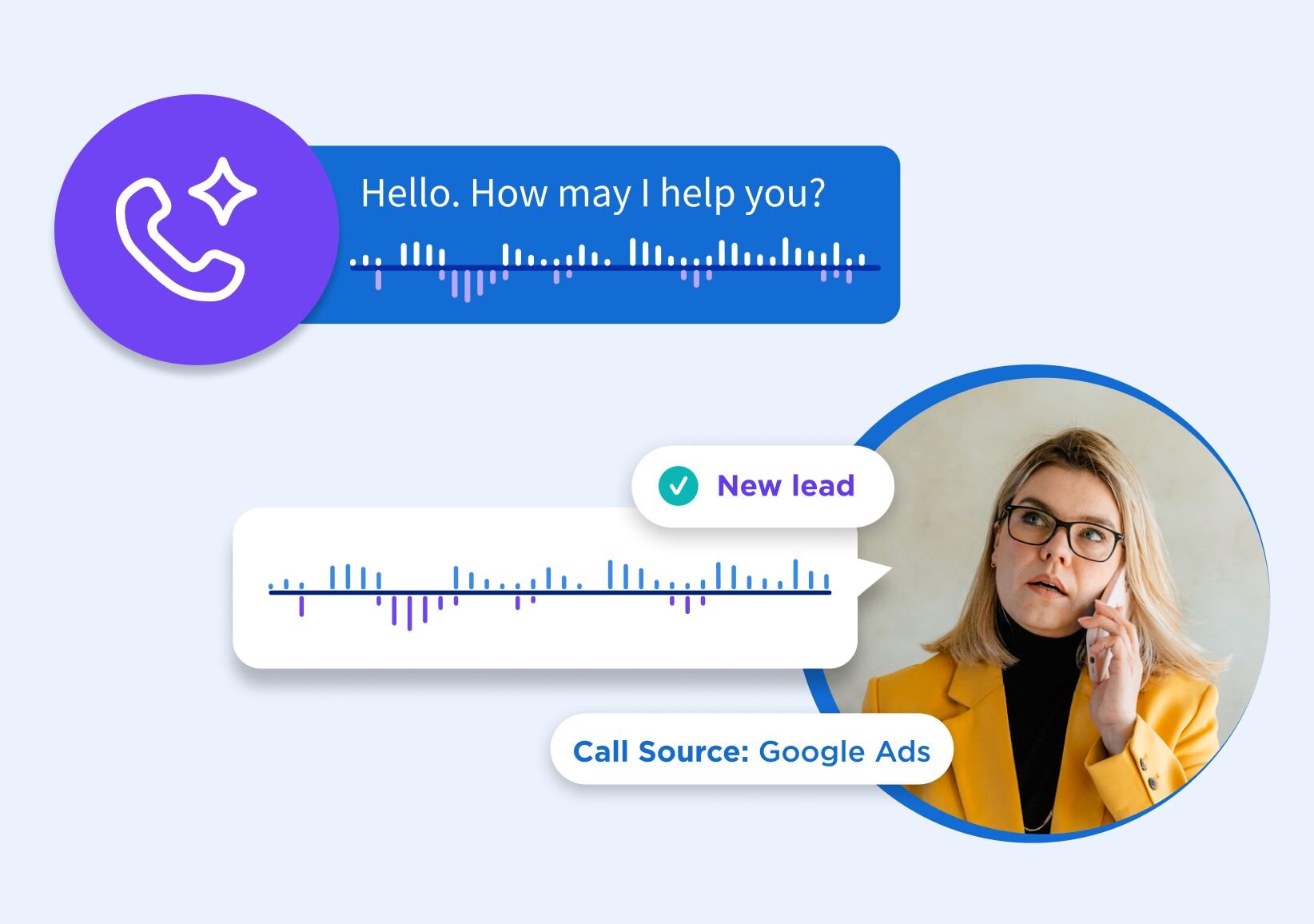For as long as businesses and marketers have spent money on marketing, attribution has been critical. Attribution refers to the ability to measure and attribute leads, customers, and revenue to specific marketing campaigns, tactics, and keywords. It allows you to know what marketing deserves the credit for each new customer that comes in. Having attribution data empowers confident decision-making: if you run two campaigns and one generates leads and the other does not, you will confidently stop investing in the low-performing campaign and increase investment in the high-performing one. Without attribution, marketers wouldn’t know what’s working - and what isn’t.
The OG: Self-reported attribution
The original form of attribution was a simple question: “How did you hear about us?”. Asked everywhere, from intake paperwork and on-site visits to contact forms and phone calls, this simple question has informed much of marketers’ decision-making for many years. The greatest strength of self-reported attribution is that the lead or customer reports it. Who knows better what ultimately puts your business on their radar?
The challenge with self-reported attribution, though, became twofold. First, the disparate data, scattered across papers, form fills, and staff memories, required manual aggregation, usually into spreadsheets for measuring and reporting. Second, buying journeys became more complex, digital, and non-linear. A potential customer has a need, does some research online, asks neighbors for recommendations, does more research on social media, and ultimately finds their way to your business.
As the number of potential points of influence in a buyer’s journey increased, marketers expanded and diversified their channel mixes to ensure businesses were present where potential buyers are most likely to research/stop by. As the number of channels used to acquire customers expanded, the need for more sophisticated software-based attribution reporting arose.
Enter: Software-based attribution
Software-based attribution uses technology to capture touchpoints along a buyer's journey and report on their respective influence over leads, revenue, and customers. These tools make it easier to track online and offline touch points along each path to purchase using cookies, clickIDs, UTM parameters, call tracking numbers, etc. Software-based attribution tools allow marketers to understand the most impactful channels, campaigns, and keywords and in what combination or sequence they deliver the best ROI. Software-based attribution is ubiquitous in the marketing landscape nowadays. Advertising platforms like LinkedIn, Google, and Meta have their own channel-side attribution reporting. Tools like Hubspot, Bizbile, and CallRail make aggregating attribution data across multiple channels possible and reduce platform bias.
The value of software-based attribution is plentiful. In addition to reducing platform bias, it provides incredible visibility into the steps along a buyer’s journey to purchase that we otherwise could not have. How many times did they hit your website before converting? What keywords were they searching? How many channels did their journey include?
Software-based attribution also provides much flexibility for marketers to analyze the series of touchpoints along their buyers’ journeys using the model that makes the most sense for their business. Marketers most interested in the final marketing touchpoint that ultimately drove a lead to convert could use a Last Touch Model - where 100% of that lead is attributed to the last channel, campaign, or keyword before conversion.
For marketers interested in what first put them on a lead’s radar, a First Touch Model may work better - attributing 100% of that lead to the first keyword they searched or ad they clicked on. And for marketers who want to consider and attribute each touchpoint's influence, a Full Path Model would suffice - attributing a portion of the lead to each channel along their journey. The number of touchpoints you could digitally capture and the reporting flexibility transformed the concept of attribution and marketers’ ability to optimize for ROI.
However, while software-based attribution solved platform bias and increased our visibility into both online and offline touchpoints, it struggles to overcome opacity caused by dark social (where real influence occurs), word of mouth (referrals), or human bias for convenience (I don’t need to write down the number on that ad, I’ll just Google them later). It can also struggle to capture the influence of brand marketing maneuvers fully.
Attribution breakthrough: The power of software-based + self-reported attribution, combined
Over time, we’ve inadvertently gained a blind spot in our ability to measure our marketing performance. As we relied more and more heavily on software-based attribution, we stopped asking, “How did you hear about us?”. In doing so, we lost line of sight into important areas of influence along the buyer’s journey, like brand marketing and referrals.
The most accurate and impactful attribution reporting combines self-reported answers and software-based insights. When the two are used in tandem, marketers can fully and accurately read their marketing landscape and make confident strategic and investment decisions. As savvy marketers caught on to this, though, by reintroducing the question into their sales process, the answers lived separate from the rest of their marketing attribution data, in spreadsheets or on client forms, making it challenging and manual to evaluate the full marketing performance picture. Until now.
CallRail is leading the way in an attribution breakthrough that will change the way marketers analyze the results of their decisions. You no longer have to choose between the blind spots in software-based attribution or live in manual data entry purgatory with traditional self-reported attribution. When leads call your business, they regularly share how they heard about you. CallRail’s new self-reported attribution feature uses AI to detect and extract attribution insights from your calls so you can report on them.
Whether you ask your leads, “How did you hear about us?” or they offer the answer unprompted, our AI-powered self-reported attribution, a feature in CallRail’s Premium Conversation Intelligence™ product, will understand and categorize the attribution insight into one of the following categories:
- Return customer
- Print ad
- Direct mail
- Billboard/signage
- Broadcast ad
- Other online ad
- Influencer
- Social media
- Online directory
- Personal referral
- Business referral
- Online search
- or Other.
If you’re already asking this question, CallRail’s AI will identify and report on the answers. If you aren’t asking, it will identify when in a conversation it is offered unprompted by your leads. The more regularly you inquire, the more data will be collected. This data, used alongside your software-based attribution data in CallRail, will eliminate blindspots, and enable more confident and accurate marketing decision-making. Marketers will no longer wonder what drove leads to search or call, they will know what put their business on each lead’s radar and what marketing converted them to ultimately reach out.
Removing blind spots for more confident marketing: 3 scenarios
It’s critical for marketers to expand their visibility into buyer behavior by bridging together self-reported attribution and software-based attribution insights. Consider these three common marketing attribution scenarios:
Scenario 1
Evan’s neighbor tells him about your bespoke dog walking and grooming business. He checks out your Instagram feed and Yelp reviews. A few days later, your remarketing campaign caught his attention. Evan is ready to reach out and clicks on the ad. He calls the number on your landing page to request a quote, and during the call, he lets you know that you also walk and groom his neighbor’s dog.
Software-based attribution alone likely attributed Evan to Instagram because he clicked through on your remarketing ad, leaving you unclear about what ultimately influenced Evan to seek out your Instagram profile.
Self-reported attribution would attribute Evan to Referral because of his neighbor’s influence.
With one or the other, you may make strategy or investment decisions based on limited insight. You may over-invest in your social campaigns. Or, you may remain blind to the value and opportunity referrals present for your business. Together, you understand the buyer’s journey and can build a strategy that incentivizes referrals, and values having your social presence dialed in and proper remarketing in place.
Scenario 2
Your marketing agency helps your landscaping company with a rebrand and marketing strategy overhaul. As part of the new strategy, they design eye-catching new yard signs for use while on the job. Julio is driving through his neighborhood and sees the yard signs and how great the landscaping looks in the yard the sign is in. He doesn’t stop to write down the phone number or website URL on the sign but remembers the catchy name.
Later that day, he thinks of the memorable yard sign he saw and searches for you online. He reviews your rates and talks it over with his partner. Later that week Julio turns to Google for your phone number and calls you from your Google My Business Profile. During the call, he mentions that your yard sign caught his eye (as did the quality of the work he observed in his neighborhood). This same scenario plays out all across your region. You receive a spike in qualified leads and calls from Google My Business - dozens, in fact. But, you only receive a few calls from your yard sign call tracking number.
Software-based attribution likely attributed Julio to Google My Business. You’d never know how influential your new branding and yard signs had been in his journey to becoming your customer.
Self-reported attribution would attribute Julio to Yard Sign. You would not have insight into the role and importance of a well-maintained GMB profile.
With only one data point or the other available, you may make strategy or investment decisions based on limited insight. You may fire your agency, or stop using yard signs altogether. You may obsess over your GMB profile. Together though, the software-based and self-reported insights give you a clearer understanding of the buyer's journey. They provide you visibility into the influence of your new brand and yard sign strategy, and have your Google My Business profile up to date and with proper call tracking in place.
Scenario 3
Your marketing team puts up a set of three new billboards across the region advertising your personal injury law firm - one on Main Street, one on Route 11, and one on the corner of 5th and Pine. They acquire a unique vanity number and plaster it in massive font across the new marketing real estate. Drivers-by are noticing! The billboards are modernly designed, have clear branding, and are well-lit. In the following weeks, you see a spike in calls from paid search, from various nonbrand and branded keywords. You hardly receive any calls from your vanity number on your billboards. Callers repeatedly mention the new billboard in conversations, especially those on Main Street and Route 11.
Software-based attribution attributes the spike in calls to Paid Search. You can see more people are searching for your brand or a mash-up of half your brand name + local personal injury attorney. With this data alone, you’d be thinking, “What gives? Was this new campaign money down the drain? Should we have just put the money into our search campaigns?”
Self-reported attribution would attribute these calls to your billboards. Alone, you wouldn’t have insight into how they preferred to find your number or whether they were using your vanity number at all.
Without these insights into your buyers’ journey, you may inadvertently undervalue and underinvest in your out-of-home (OOH) marketing strategy and overvalue and overinvest in your search campaigns. Together, you understand better human beings’ preference for convenience and “googling it later.” With both insights, you can see the influence your billboard strategy has on prospective clients’ propensity to search for you, and the need to have a balanced, holistic strategy in place for creating and capturing interest.
Try AI-powered self-reported attribution yourself
Accurate attribution is critical. Until now, it’s been challenging to measure the influence of brand marketing, dark social, or referrals. Hidden in your conversations are insights into what drove your customers to call.
Self-reported attribution uses AI to identify, extract, and surface these insights alongside your software-based call attribution in CallRail. Finally, know how word of mouth impacts search performance or how well your new branding is getting noticed.
Try this and more when you start a 14-day free trial of CallRail’s Premium Conversation Intelligence™.










